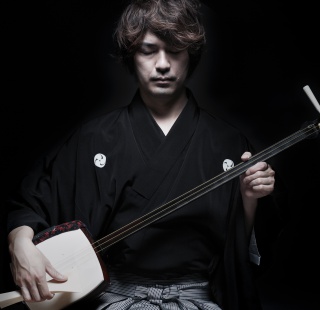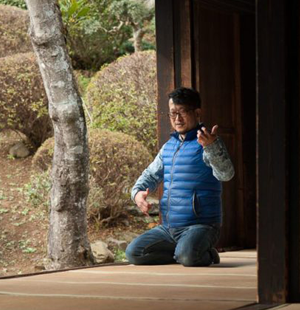Tetsuya Nozawa (Contemporary Shamisen)
Profile
1993
I touched the shamisen for the first time at the Hanazonen University
Japanese Music Club.
1997
Joined the Institute of Contemporary Japanese Music (third grader).
Studied with Akiko Nishigata.
1998
Hase-Kengyo memorial the National Music Competition (Jiuta) won the Excellence Award.
2000
tor Traditional Culture Promotion Foundation won the Japanese Music Technician
Nurture Award.
Hase-Kengyo memorial the National Music Competition (Jiuta) won the Excellence Award.
2001
Inauguration the Shamisen lecturer at the Modern Japanese Music Institute.
Started delegation of songs. In charged of the premiere stage more than 140 songs to date.
Started composing at the request of the song from composer. In charge of premiere of over 140 songs to date.
Received the encouragement prize of the Ibaraki Traditional Culture Promotion Foundation.
Participated in Seoul performance which is “Japan-Korea Memorial Folklore Orchestra” in Overseas Performances of the “Pro Musica Nipponia“.
2002
Participated as assistant to Creative ensemble of Japanese traditional
instruments “Aura-J”. 2004 official joining.
2003
Participated in the Austrian and German performances by master Akiko
Nishigata.
In charge of the performance of the soundtrack of the animation “Platenes” what be aired by NHK BS.
2004
18 CDs of “Contemporary Japanese Shamisen music” have been
released to date.
2005
Part-time lecturer at modern Japanese music course of the
Senzoku-Gakuenn music university.
First prize at the “Tokyo Japanese Music Competition”
2007
CD “message – Shamisen solo song collection -” was awarded TY support.
2008
Miki Minoru Composition “Shamisen Concerto” Performed as a solo player in
the premiere.
2010
Participate in the American performance of “Pro Musica Nipponia”. Performances and workshops held at A & M University of Texas and the University of Hawaii.
2012
Concert with the Japan Philharmonic Symphony Orchestra (broadcast on NHK-FM, CDs on sale)
“Tetsuya Nozawa Shamisen Orchestra” started.
2013
Player for the theme song and insert song of the program “Nippon no Geinou”
of NHK Educational Television (E テレ).
2014
Start the study of “三弦秘曲 ( Jiuta )”.
2015
Nozawa Tetsuya Shamisen recital “Challenging the extreme of shamisen
music” (at the 70th Cultural Agency Art Festival)
2016
Ancient festival drama “Memory of the Sun – Himiko” (composed by Yukihiro
Sugano) Participation in Singapore Performance.
2017
Performed in Enka singer / Hiroshi Itsuki ‘s concert ”Japanese mind playing
with Japanese instrument (和楽器と奏でる日本のこころ)”.
Player for the theme song and insert song of the program “料理人季蔵捕物控”
of NHK radio.
NHK Educational TV “Japanese Music Festival”, NHK-FM “Japanese Music
Hundred Number”, NHK-FM “Japanese Music Moment” Other Appearance
Comment
My style of shamisen is to play contemporary Japanese music with a shamisen.
In a word, Contemporary Japanese music is music that is not classic
Classical Shamisen music each had developed its own development. Therefore, many shamisen music have been going in parallel without intersection until the modern . The change began to be noticeable since the Meiji era. It interactions between different genres, other school, and other instruments have been gradually made. This is not limited to shamisen music, but other classical Japanese music (koto songs, biwa music, gagaku, shakuhachi etc) also develops their own instruments and their music independently, and never intersects other instruments was. I think that contemporary Japanese music is to enjoy performance with other genres, schools, and other instruments beyond their boundaries. As a feature of my music world, rather than using the score of a unique shamisen, it is a point to use a normal score (5 lines). Regarding the songs that we play, not only Japanese music but also works of foreign composers are played. The most characteristic point of this music’s shamisen is that, regarding the shamisen, there are no constraints on musical instruments, Bachi(picks), Koma(Bridge), etc., which are determined by the genre of the shamisen. Whichever type of shamisen player you can freely select and use. The most distinctive feature of this music’s shamisen is that there are no restrictions on the type of shamisen which is conventionally decided by the genre of the shamisen, and items such as Bachi (pick) and Koma (bridge). Any type of shamisen and parts can be freely chosen and used. By choosing freely, it makes it easier to change the expression of the sound. In addition, new works of music are also composed one after another and new methods of playing are also being created.

